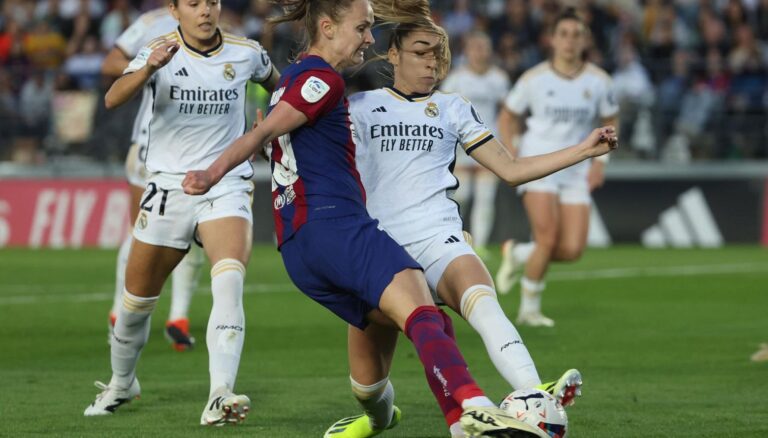
In a match defined by contrasting styles, Barcelona showed control and technical superiority over a defensively-minded Real Madrid. Starting in a 4-4-2, Real aimed to control pressure and hit on the counter, relying on deep passes to Feller and Redondo. Barcelona, occuppies the most space they can, utilized Alexia Putellas between the lines, with Aitana and Patri building from deep and full-backs Batlle and Brugts stretching the play.
Patri’s early goal shifted the momentum. Real responded by pressing higher, but Barça’s calm passing, particularly through Bonmatí and Putellas, broke through pressure with ease. Real struggled to progress through midfield, often skipping Weir entirely and resorting to long balls intercepted by Mapi and Irene.
Barcelona controlled possession and field position, with their high defensive line blocking Madrid’s counters. The right-side triangle of Hansen, Ona, and Bonmatí was particularly effective, though Angeldahl and Carmona were able to stop them defensively. Despite conceding again, Real maintained their press but couldn’t match Barça’s composure.
In the second half, Real switched to a 4-3-3, with Carmona more aggressive down the flank and Weir dropping deeper. Substitutions brought fresh legs, but Madrid continued to lack the strength. Hansen vs. Carmona remained a key duel. Pere Romeu countered Madrid’s changes by reinforcing midfield with Keira Walsh, pushing Patri forward.
Though Barcelona slowed the tempo late on, their technical control persisted. Bonmatí’s pressing led to the fourth goal, and 17-year-old Sydney Schertenleib’s debut symbolized Barça’s eye on the future. Ultimately, the match showcased Barcelona’s tactical maturity and Real’s struggles to close the technical gap.



